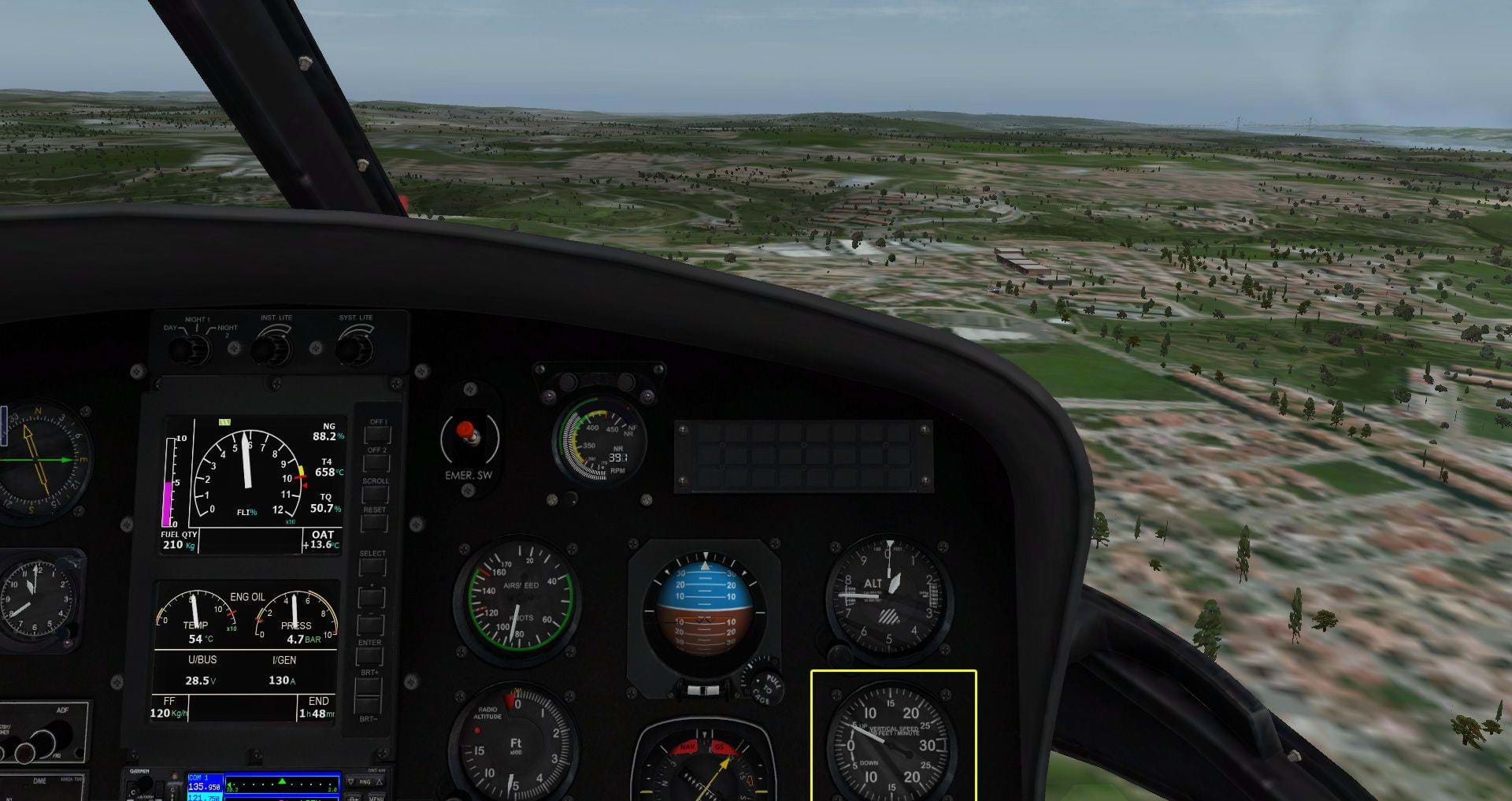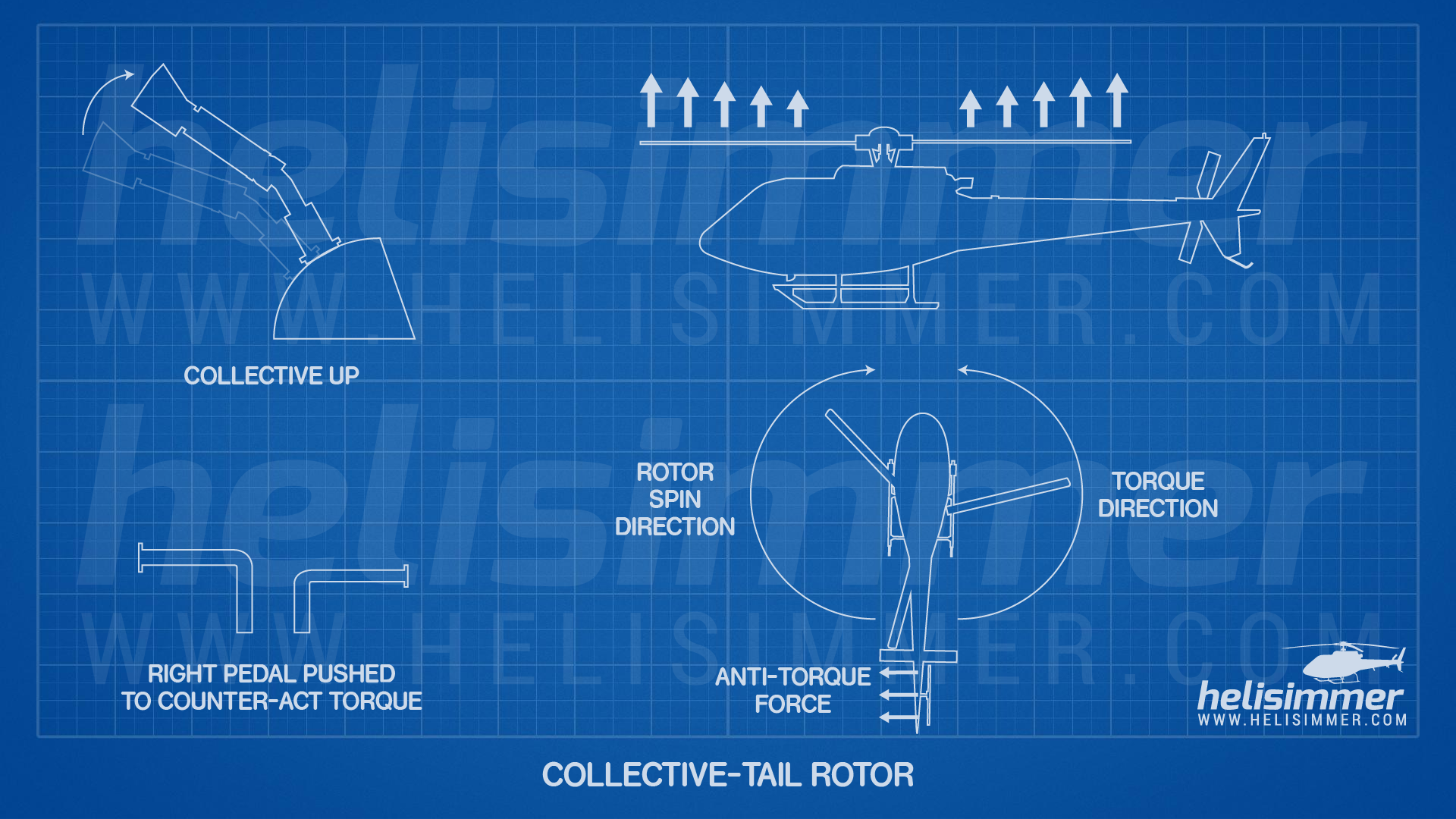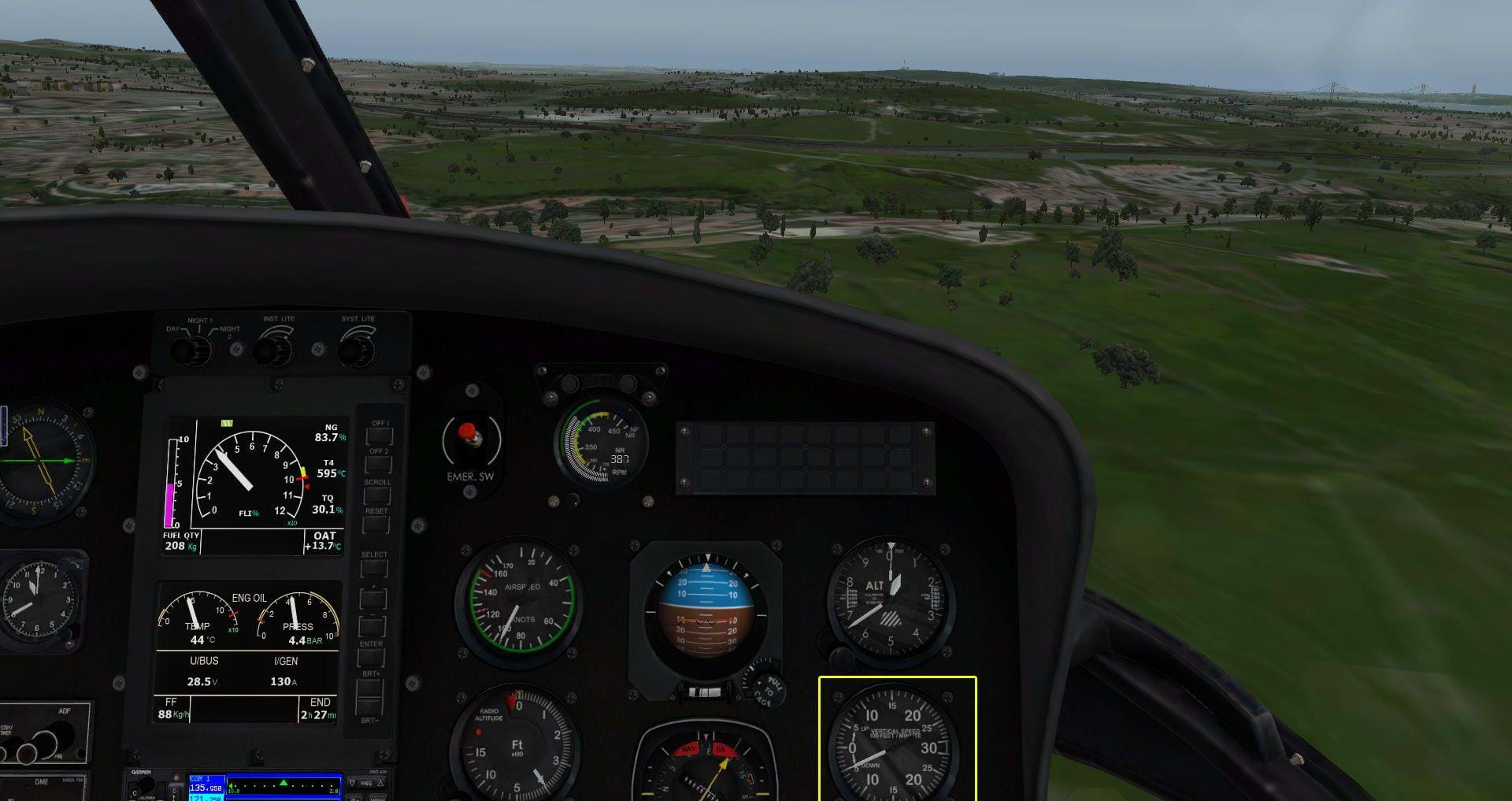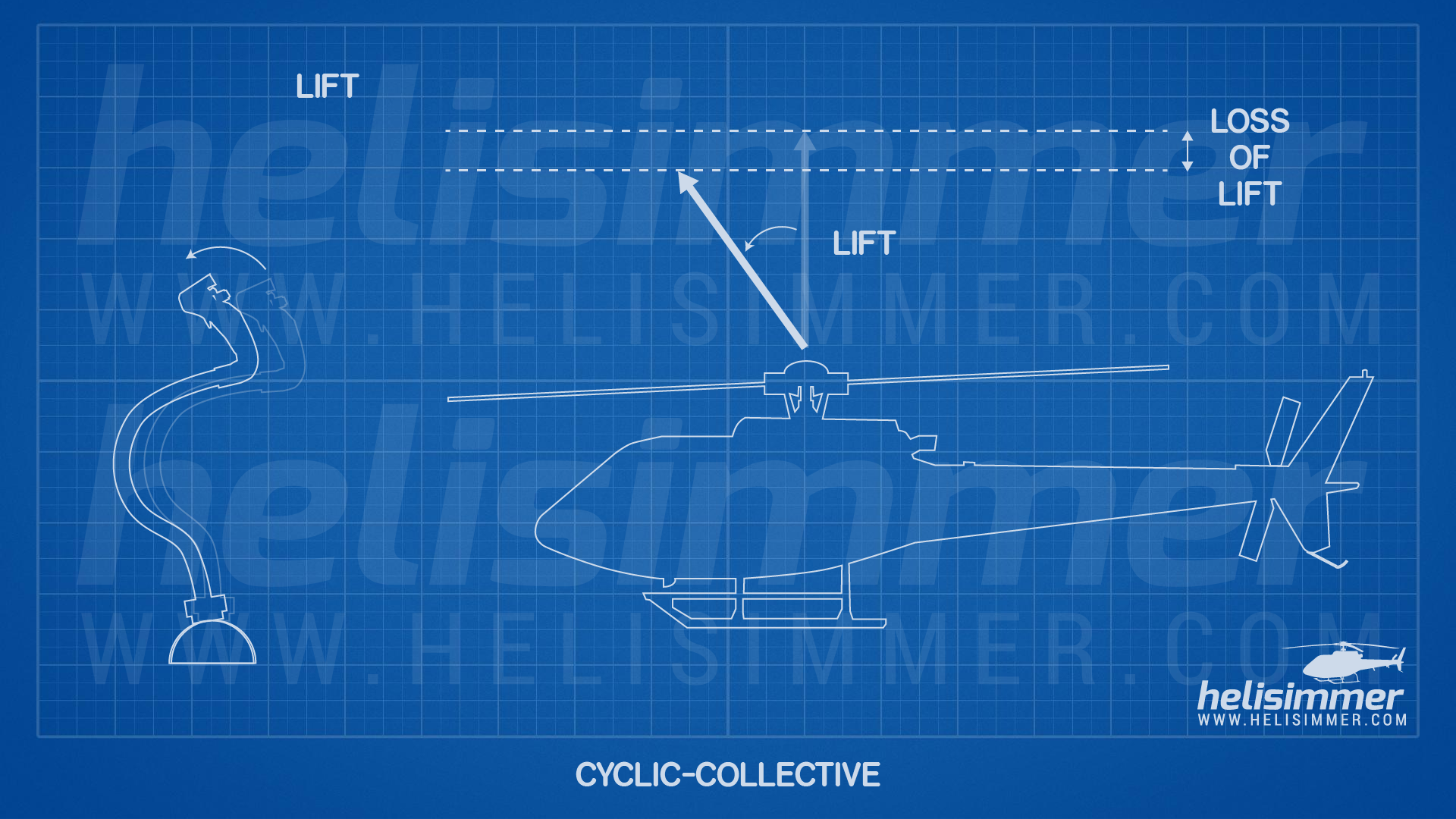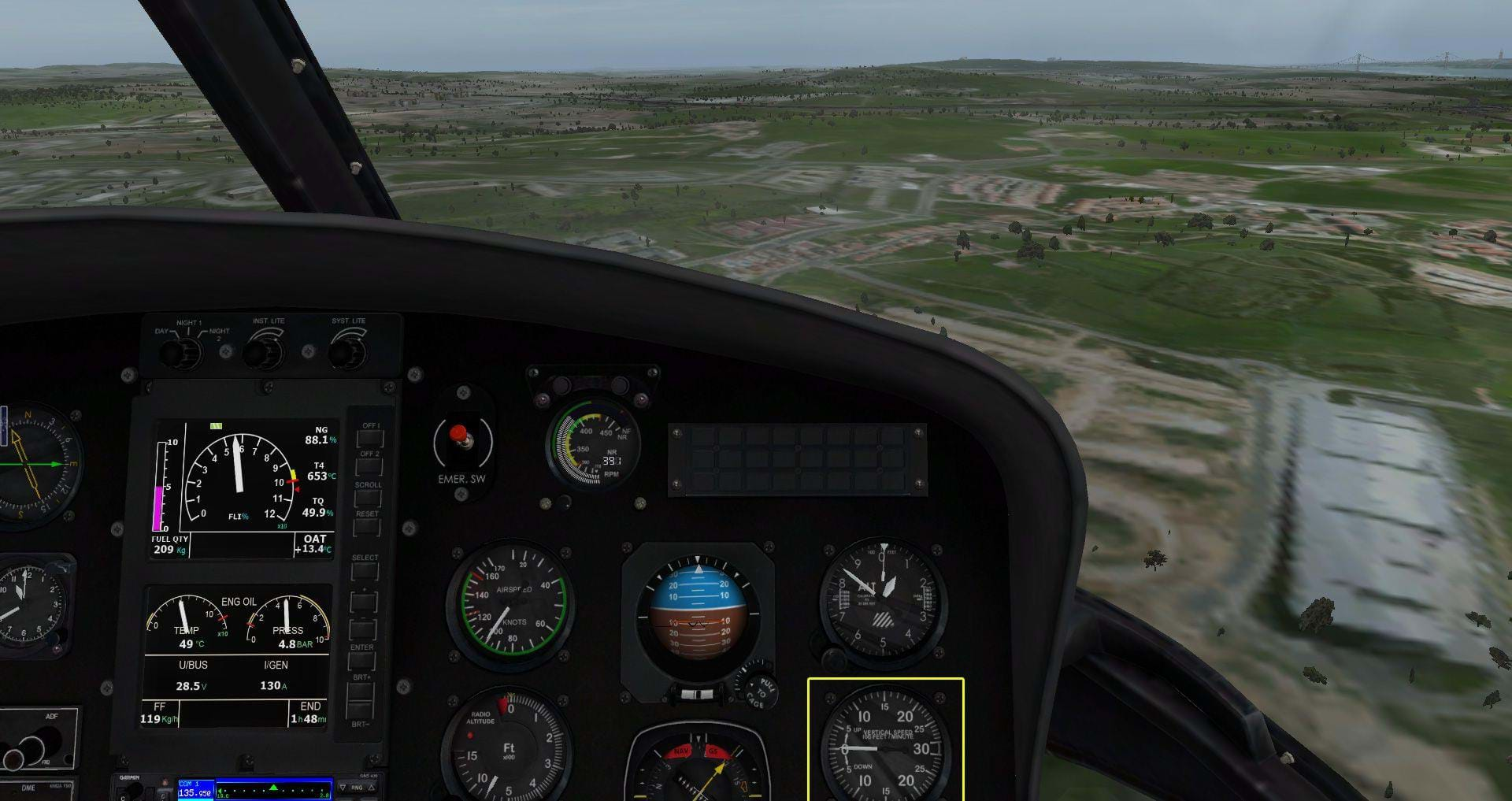Climbing and descending is a rather easy operation and the procedure is somewhat similar to the one you perform in a fixed-wing aircraft. In a fixed-wing, you usually increase or decrease power and let the aircraft settle itself onto the climb or descend.
In an helicopter, you usually don't touch the power but, rather, the collective to either gain or lose lift and, therefore, gain or lose altitude.
Climbing
If you want to climb, you'll need to pull the collective up. Do it slowly and steadily and keep an eye on the vertical speed indicator (VSI). You'll normally want to keep your vertical speed at around 500 feet per minute as that's the speed the ATC usually expects aircraft to climb a and gives you a nice, steady climb. I personally keep it between 500-1000 feet per minute.
Note that, once you pull the collective up, the nose of the helicopter will want to rise. Your first instinct will probably be to pull the cyclic forward. Don't. Let the helicopter settle itself on the climb. Also, remember that by pulling the collective, you are incresing the engine torque and, therefore, you'll need to counter-act this with your pedals.
To keep your vertical speed steady, you have 2 options: you either keep adjusting the collective or you can use your cyclic to perform some fine-tuning. Keep in mind that your speed will vary a little but, sometimes, you'll need to do it to keep your vertical velocity constant.
Keep an eye on the VSI as to maintain your vertical speed if that's important to you -- to, let's say, keep your climb steady when performing a circuit or in controlled areas.
Descending
To descend, you simply revert the climb procedure: drop the collective (again, slowly) and the nose will drop. Lift will decreas and you'll start descending. Again, try to refrain yourself from pulling the nose up. You'll need to let the helicopter settle on the descend.
Also, keep an eye on the VSI as to keep the vertical speed at a constant, comfortable and safe rate. It will depend on the amount of altitude you want to lose and the horizontal distance you have available. Do keep an eye on it and don't descend too fast. You might damage your aircraft frame.
You'll also need to adapt to your current altitude. Usually, the lower you are, the slower you'll descend.
You can, again, fine-tune your descend using your cyclic. Remember that you will lose or win speed so you'll need to decide on that tradeoff.
Straight and level flight
Keeping your flight straight and level is harder than climbing or descending. Although you'll also need to keep an eye on the VSI to keep your vertical speed straight when climbing or descending, I find it harder to keep the helicopter straight and level as it tends to gain or lose altitude slightly most of the time.
Since we have no physical sensation, we won't be aware of slight altitude changes so it's even more important to keep an eye on the VSI as the helicopter will try to challenge you.
I usually start by settling my speed and then work on my altitude. Using the collective, I then try to keep my vertical speed at zero (not climbing neither descending). Again, with the cyclic, you can fine-tune your vertical speed and keep it steady.
Again, keep an eye on the VSI and try to keep your vertical speed steady. It's a challenge but you'll eventually feel comfortable with it and will be able to anticipate your helicopter's gains or losses of altitude.
As with everything else regarding helicopters, you'll need to keep on top of everything. Keep your helicopter under control at all times and adjust your actions to the situation. Do not yank controls or do things too fast or too slow.
Credits
I’d like to thank Joe Hudson for all the help and support while writing this article.
How to fly helicopters series
Check out the other articles on this series. Click here to see all the available material we have.

